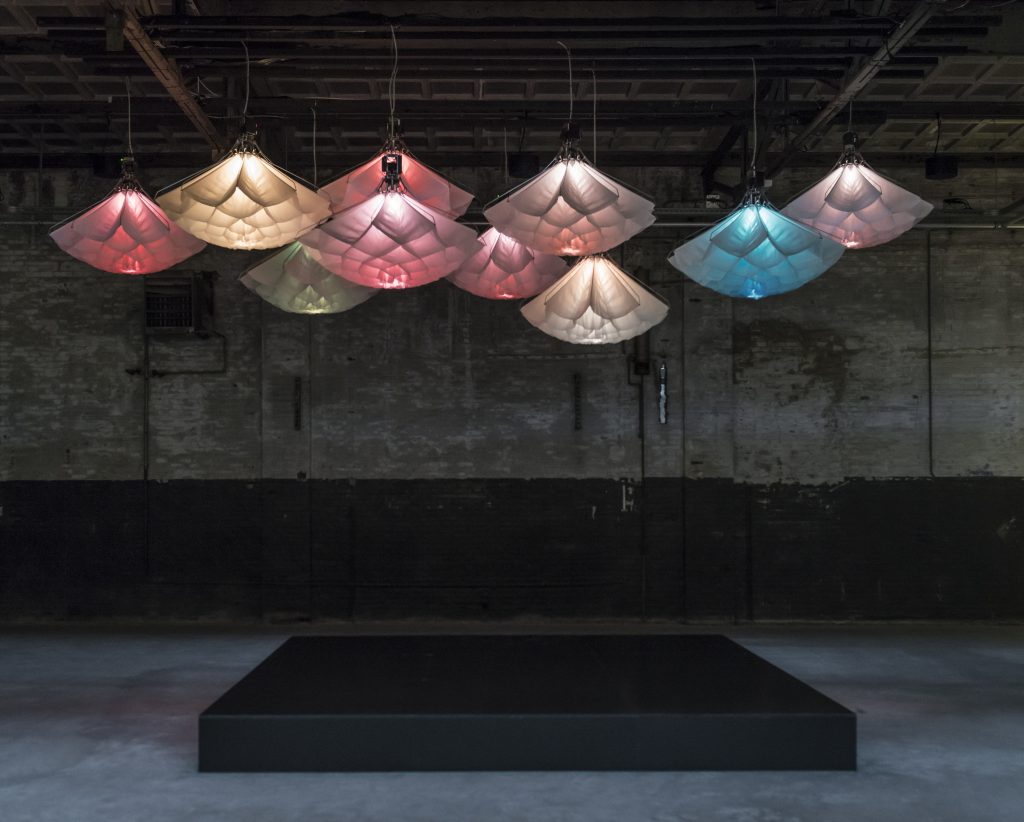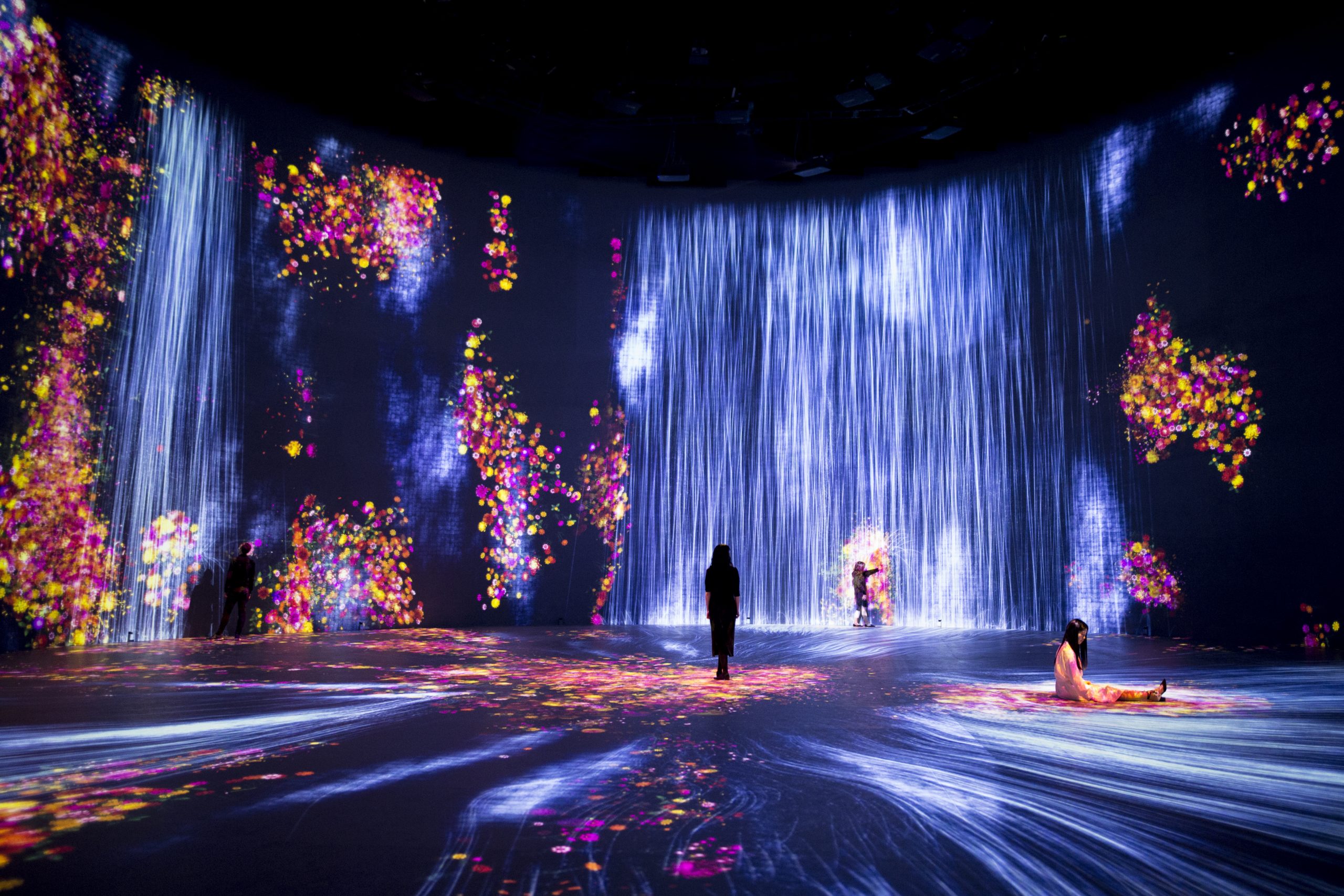Please Touch the Art
Superblue in Miami
When historians write the next chapter in the story of art, you just had to be there when it happened. The recently opened Superblue exhibit in Miami’s Allapattah arts district demonstrates the trending power of experiential art. The show features work from the legendary James Turrell, the Japanese collective TeamLab, and British artist Es Devlin, as well as a rotating exhibition currently from the Amsterdam-based Studio Drift. Each piece essentially offers its own immersive environment, inviting the visitors—viewers proves too reductive a term—to engage, interact, and, of course, film and photograph (with one notable exception).

Meadows from Studio Drift is a series of kinetic light sculptures described as “an upside-down landscape” by its creators. The floral installations react to motion in the space, opening and closing, illuminating and changing color. Two pieces from TeamLab continue the floral themes in the show, Flowers and People, Cannot be Controlled but Live Together – Transcending Boundaries, A Whole Year per Hour and Proliferating Immense Life, A Whole Year per Year. Flowers in various changing states project onto walls and floors; the digital flowers react to the presence of people, dying if stepped on, scattering, or changing in their state. The space has the feel of an augmented warehouse size video game, and without the presence of other people might even feel like stepping into a virtual reality. Another TeamLab installation that requires an extra ticket, Universe of Water Particles, Transcending Boundaries, takes the immersion concept to the next level: the innovative arts collective describes the installation as an “ultrasubjective space” requiring ponchos and protective gear to explore the mists of floating water particles that billow and cascade. The exhibition finishes with Devlin’s Forest of Us, an elaborate multi-tiered mirror maze with augmented video elements occasionally breaking up the kaleidoscopic fractals of human bodies.

Interestingly, if there’s an outlier among these works, it’s Turrell’s Ganzfeld. For one, it’s the only installation that prohibits photography, ostensibly for safety reasons. However, it’s just as likely the visionary artist wants us to have an unmediated experience with the work, which specifically plays upon a phenomenon of human consciousness and perception. It is hard to imagine even the most ultra high-definition iPhone cameras capturing the subtle changes in light and color in this space. Turrell pioneered the experiential art movement, and he’s explored the Ganzfeld phenomenon since the late 1990’s. The subtle engineering of the piece almost feels like an industrial punk relic compared to the digital electronica of the other pieces. Yet the vintage feel and godfatherly nature of Turrell’s presence in the exhibition rounds the show out nicely.
For more about the exhibition, visit the Superblue website. Can’t make it to Miami? There’s a chance the show could be coming to you in the future!
Interested in how interactive works could change the future of art? Curious about the legacy of James Turrell? Visit the Art section at HV for more provocative takes on the evolution of art in the digital age.
Photo Credits
teamLab, Universe of Water Particles, Transcending Boundaries, and Flowers and People, Cannot be Controlled but Live Together – Transcending Boundaries, A Whole Year per Hour, 2017. Sound: Hideaki Takahashi. Installation view of Every Wall is a Door, Superblue Miami, 2021. © teamLab, Courtesy Pace Gallery
DRIFT, Meadow, 2017. Installation view at DDW, 2018. Photo: Ruud Balk. Courtesy of DRIFT.
Es Devlin, Forest of Us, 2021. Installation view of Every Wall is a Door, Superblue Miami, 2021. Photo: Andrea Mora
